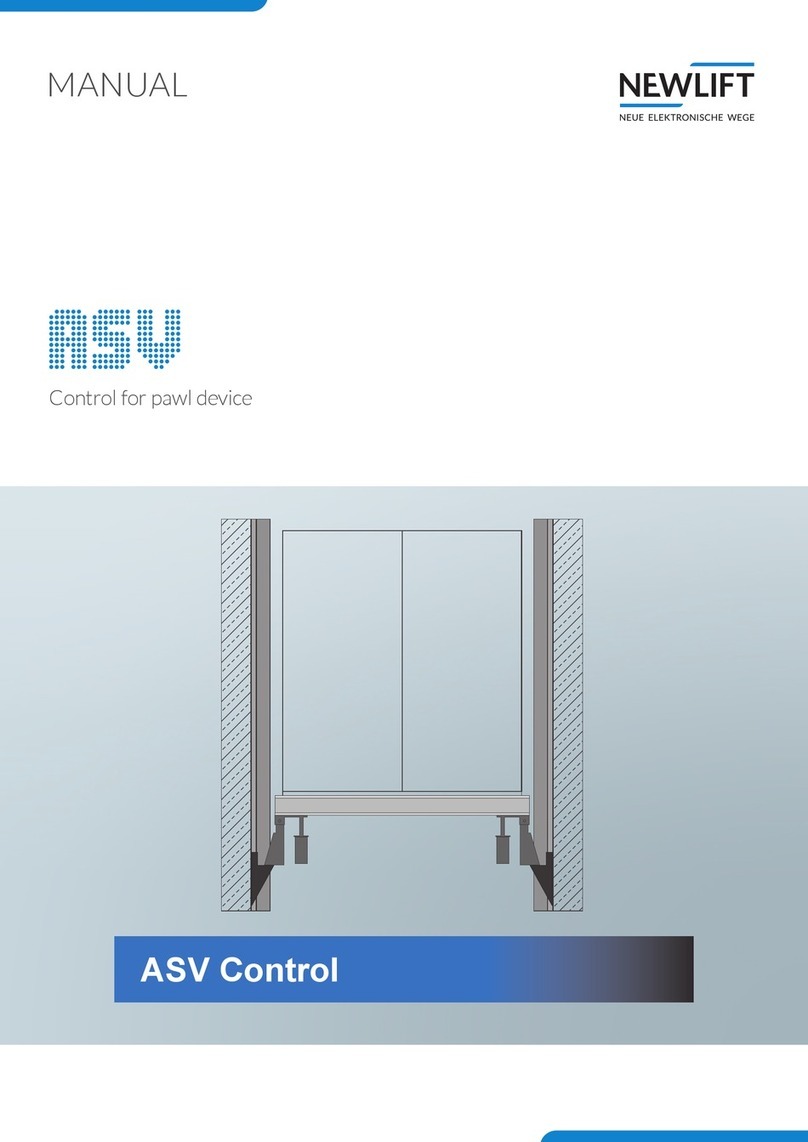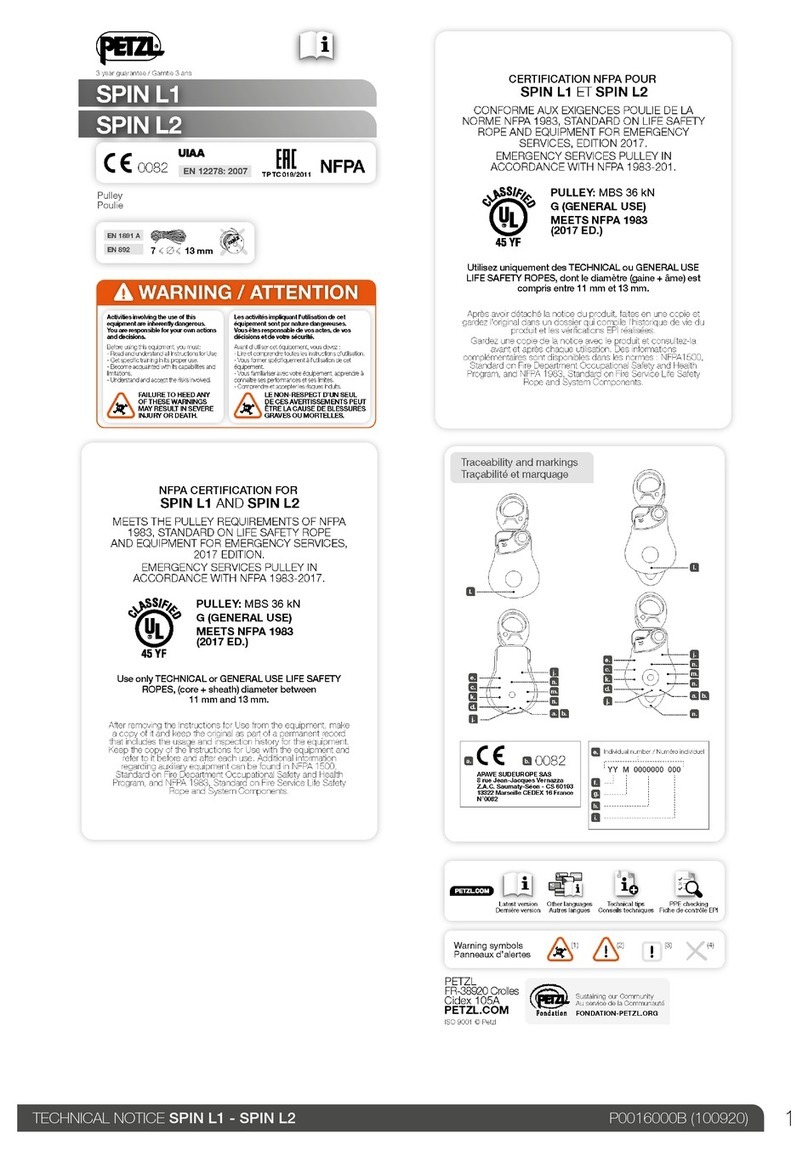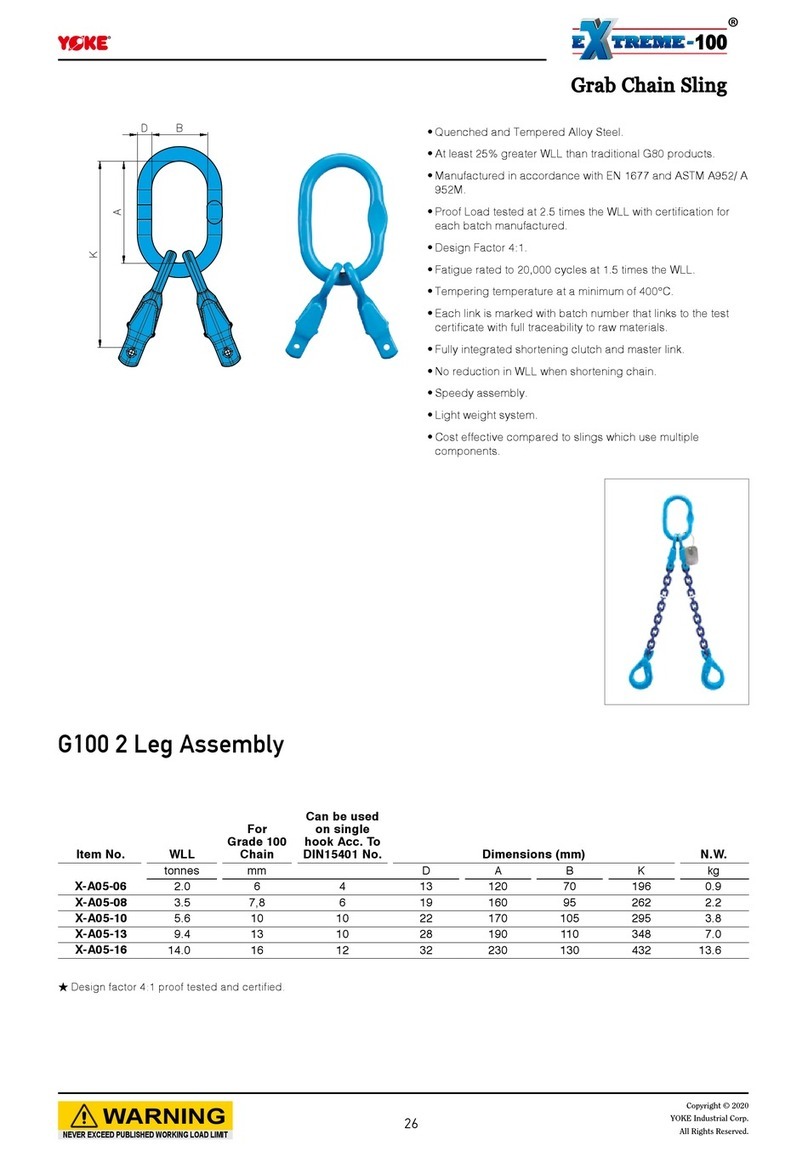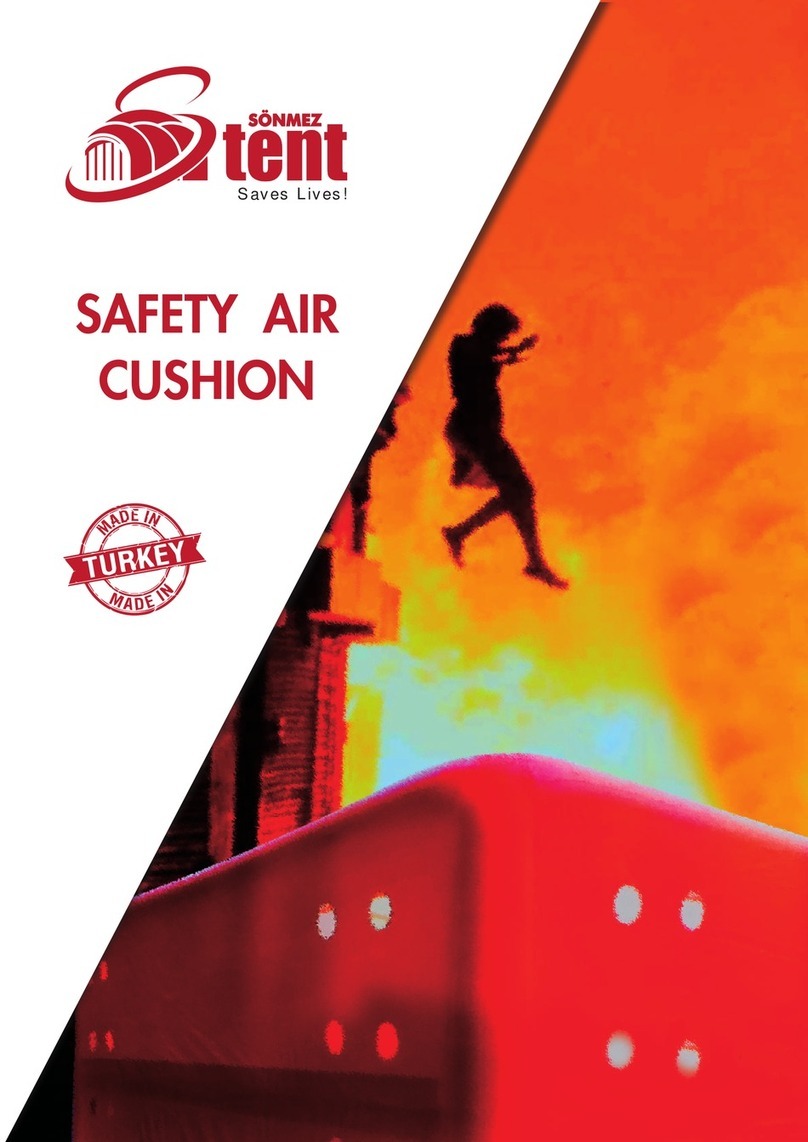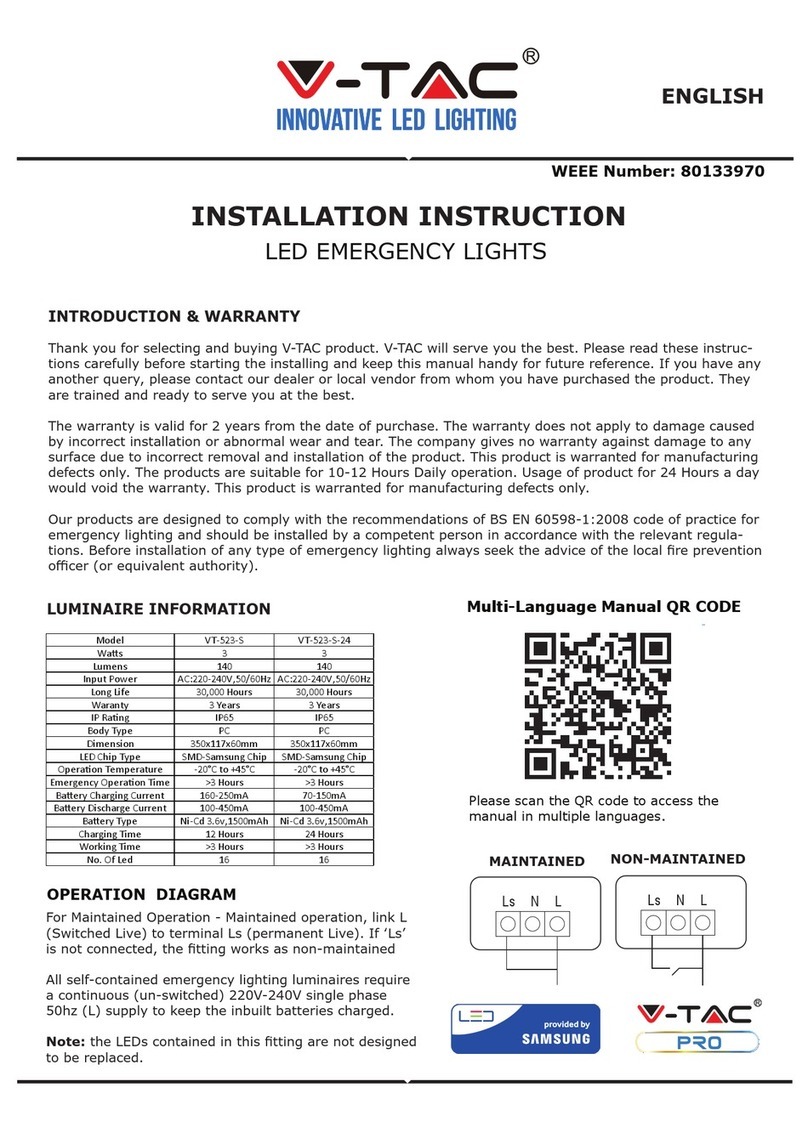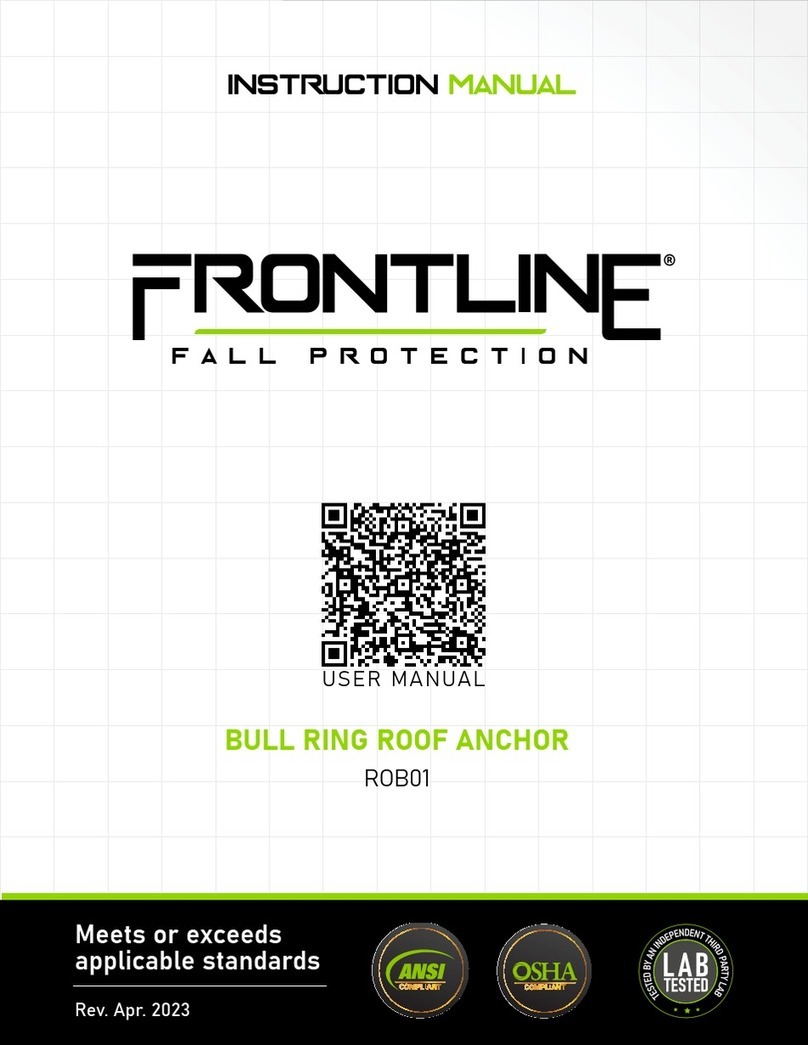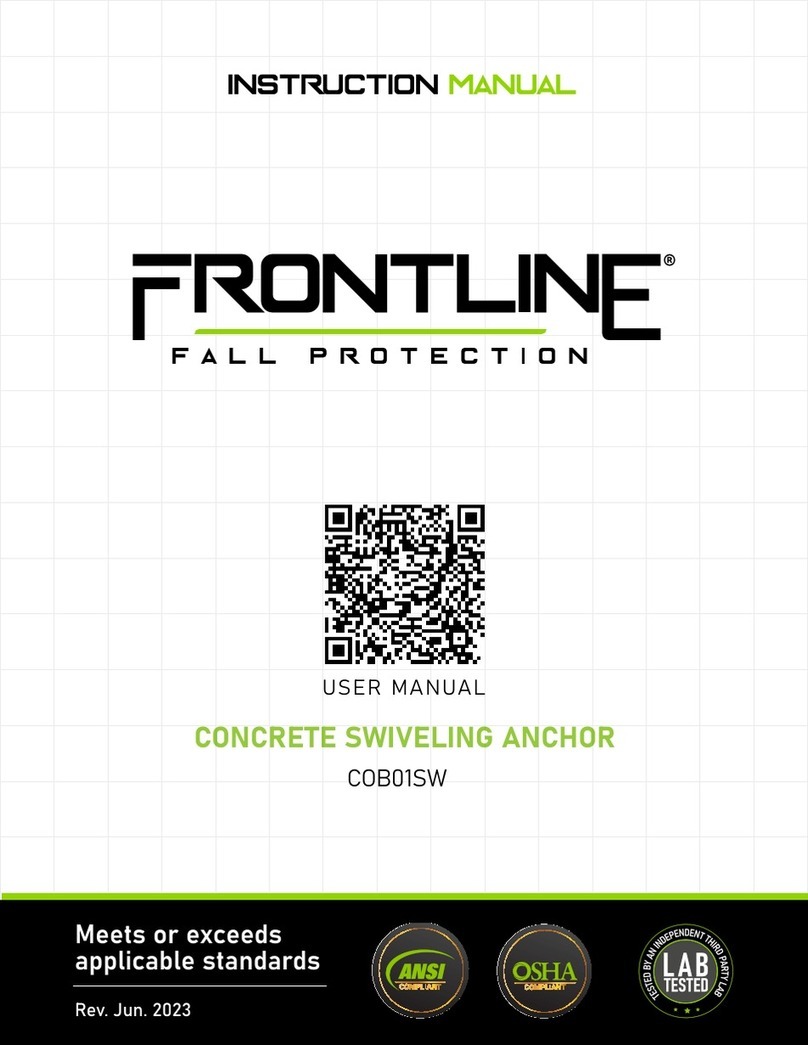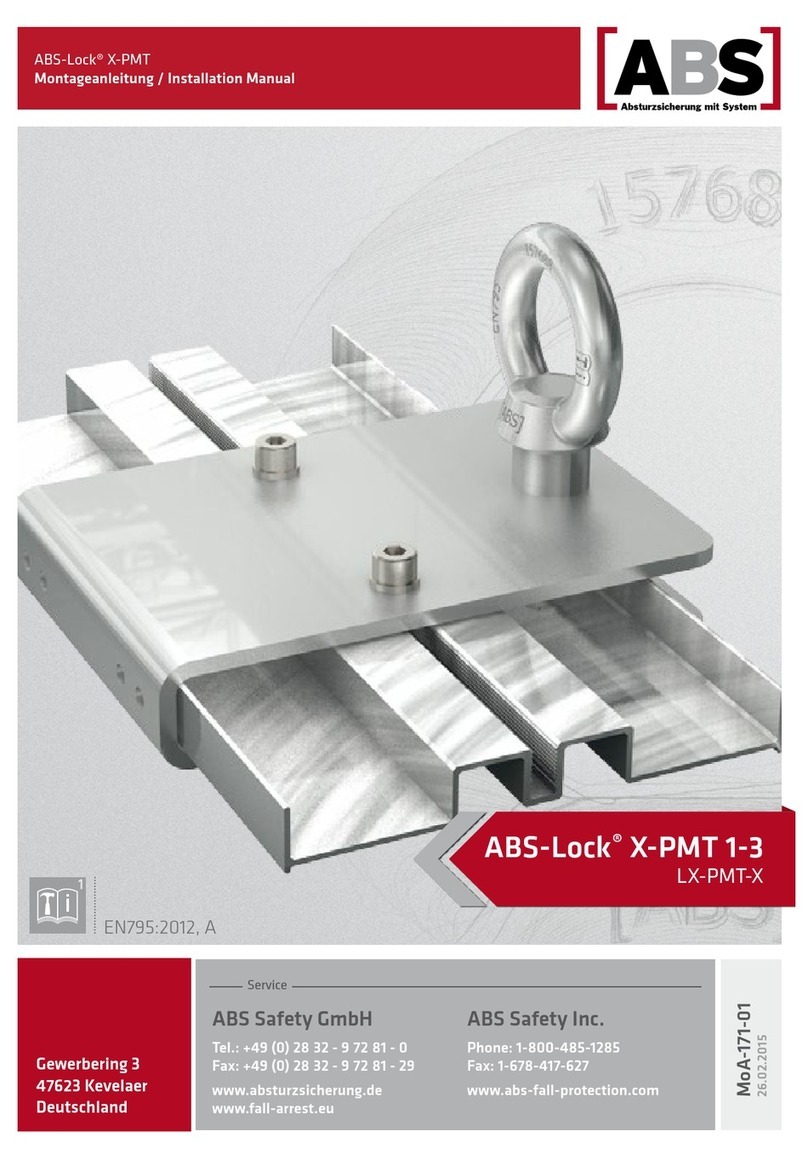New lift FSTS1 User manual

SAFETY SYSTEM
Installation and Commissioning Manual
MANUAL

S1 Installation & Commissioning Manual
Manufacturer NEW LIFT
Neue elektronische Wege
Steuerungsbau GmbH
Lochhamer Schlag 8
82166 Gräfelng
Phone +49 89 – 898 66 – 0
Fax +49 89 – 898 66 – 300
E-mail [email protected]
www.newlift.de
Service line Phone +49 89 – 898 66 – 110
E-mail [email protected]
First edition 03/06/2019
Author AL / DOS
Last change 01.02.2021 AME
Release 01.02.2021 AL
Hardware version V1.01
S1 software version Rev. 900
FST software version a-0155
Software signature 0xE090E0EA
Document number S1.12
Document version hb_S1_2020-02_2.4.3_en
Copyright © NEW LIFT Steuerungsbau GmbH, 2021.
This manual is protected by copyright. All rights, including those of copying,
of reproduction, of translation and of modication, in whole or in part, are
reserved by the publisher.
No part of this description may be reproduced in any form or copied with an
electronic replication system without written permission.
Although great care has been taken in the production of texts and gures, we
cannot be held legally liable for possible mistakes and their consequences.

S1 Installation & Commissioning Manual 3
Contents
1 General 6
1.1 Information on this manual 6
1.2 Abbreviations, characters and symbols used 6
1.3 Notation 7
1.4 Further information 8
1.5 How to contact us 8
2 System properties 9
3 Safety 10
3.1 Overview of the safety functions 10
3.1.1 Excessive speed (pre-triggering) 12
3.1.2 Excessive speed (speed limiter) 12
3.1.3 Deceleration control circuit 12
3.1.4 Emergency end switch 12
3.1.5 Door bypass 13
3.1.6 Inspection end switch 13
3.1.7 Unintended movement with opened doors 13
3.1.8 Access door monitoring 13
3.1.9 Resetting the access door monitoring 14
3.1.10 Pre-triggered stopping system 14
3.1.11 Loss of traction 15
3.1.12 Prevention of normal operation (bypass) 15
3.1.13 Inspection switch 15
3.1.14 Monitoring the inspection buttons 15
3.1.15 Auxiliary mode switch 16
3.1.16 Mechanical equipment (folding supports) 16
3.1.17 Temporary protected space 16
3.1.18 Acceleration monitoring 17
3.1.19 Installation mode preventing normal operation 17
3.1.20 Monitoring the inspection and auxiliary speed 18
3.2 Basic safety principles 18
3.3 Safety regulations 19
3.3.1 Qualicationsoftheinstallingengineer 21
3.4 Residual dangers and protective measures 22
4 Required knowledge 24
4.1 Denitionsofterms 24
4.2 Switching installation and teach mode on and off 25
4.2.1 Installation mode 25
4.2.2 Teach mode 25
4.3 S1 guide 26
5 Overview 30
5.1 Commissioning table 31

4S1 Installation & Commissioning Manual
6 Commissioning 33
6.1 Installing and wiring the system 33
6.1.1 Checking the delivery contents 33
6.1.2 Checking the general requirements of the lift system 33
6.1.3 Installing the Safebox (commissioning step 1) 34
6.2 Checking important system functions 37
6.2.1 Checking system settings of the FST (commissioning step 2) 37
6.2.2 Checking system speed (commissioning step 2) 37
6.2.3 Setting and checking the safety parameters of the S1 system (commissioning step 3) 38
6.2.4 Checking installation mode (commissioning step 4) 40
6.2.5 Performing a reset and activating the system 40
6.2.6 Installation drive without sensor 41
6.2.7 Checking auxiliary mode control (commissioning step 5) 42
6.2.8 Checking SHK relay triggering (commissioning step 6) 43
6.2.9 Checking the traction (commissioning step 7) 43
6.2.10 Checking SBR relay triggering (commissioning step 8) 43
6.2.11 Checking the folding supports protected space version (commissioning step 9) 44
6.2.12 Checking the inspection control (commissioning step 10) 45
6.2.13 Installing the position system (commissioning step 11) 46
6.2.14 Installing the magnetic tape 46
6.2.15 Installing the magnetic tape with magnetic tape holder 47
6.3 Installing the sensor 53
6.3.1 Connecting the sensor and switching on the control system 55
6.3.2 LED display 56
6.3.3 Checking the position system (commissioning step 12) 57
6.3.4 Installation check 57
6.3.5 Checking a loss of traction (commissioning step 13) 58
6.3.6 Teachingendswitchesandendoors(commissioningsteps14and15) 58
6.3.7 Checking inspection end switches (commissioning step 16) 61
6.3.8 Checking access monitoring (commissioning step 17) 62
6.3.9 Carrying out calibration drive 63
6.3.10 Checking the trigger speed (commissioning step 18) 64
6.3.11 Checking deceleration monitoring (commissioning step 19) 66
6.3.12 Checking the pre-triggered stopping system protected space version
(commissioning step 20) 68
6.3.13 Checking emergency end switches (commissioning step 21) 68
6.3.14 Checking the bypass switch (commissioning step 22) 69
6.3.15 Setting the door zone length (commissioning step 23) 69
6.3.16 Teachingandcheckingtheoors(commissioning step 24) 70
6.3.17 Checking unintended movements (commissioning step 25) 71
6.3.18 Normal operation (commissioning step 26) 71
6.4 Appendix 72
6.4.1 Setting the trigger speed 72
6.4.2 Shortened buffers at shaft end 72
6.4.3 Teaching positions in the shaft 73
6.4.4 Setting the access monitoring 73
6.4.5 Replacing hardware components 74
6.4.6 Data backup (S1 box) (available soon) 75
6.4.7 Capacitive coupling 75

S1 Installation & Commissioning Manual 5
7 Checks 78
7.1 Pipe break test instruction 80
8 Emergency escape 82
8.1 S1 safety functions during evacuation operation 82
8.2 Protective measures for unforeseeable events 83
8.3 Emergency escape procedure with S1 safety system 83
8.4 Emergency escape procedure without S1 safety system 83
8.5 Diagnostics interval 83
9 Technical data 84
9.1 Marking 84
9.2 Technical data - S1 box 86
9.3 Connection and pin assignment - S1 box 89
9.4 Technical data - Sensor 92
9.4.1 Pin assignment for D-sub connector, LIMAX3R/D9M sensor 94
9.4.2 Sensor bracket 94
9.5 Technical data - Magnetic tape 95
9.6 Functions and properties of switches and sensors 97
9.6.1 Sensor combination 97
9.6.2 Logic circuit (S1 monitoring device) 99
9.6.3 Actuator combination 100
9.7 Spare parts list 101
10 Overview wiring diagram 102
11 Menu tree 103
11.1 General 103
11.2 MAINMENU-Conguration/Installation/S1-System 105
11.3 MAIN MENU - Positioning/Global 106
12 Event messages 106
13 Error list 109
13.1 Error messages 109
14 Change history 118
15 Maintenance, servicing, repairs 119
16 Certicates 119
17 Index 135

General
6S1 Installation & Commissioning Manual
1 General
1.1 Information on this manual
►This manual provides important information on how to handle this device and the lift system.
►For your own safety and for operational safety, please observe all information, safety notes and
warnings.
►Perform the instructions and test steps in the sequence described.
►Comply with the local accident prevention regulations and general safety regulations that apply in
the location the device is used.
This manual is a component of the S1 system.
►Read through the manual carefully before starting any work.
►Keep the manual close by so it is always within easy reach for installing engineers and authorised
personnel.
The illustrations in this manual might sometimes not be true to scale and may differ from the actual
design for the purpose of improved presentation.
1.2 Abbreviations, characters and symbols used
Symbol/
abbreviation Meaning
ABS Anti creep device
AUX Auxiliary mode control
FK Car
FST Fieldbus controller
S1 Safebox
SBR Safety brake
SBR relay Relay of the Safebox for SBR or ABS
SHK relay Relay of the safety circuit Safebox
DOOR relay Relay of the Safebox for door bypass
AUX relay Relay of the Safebox for auxiliary mode control
SG Shaft pit
SK Shaft head
TCH Teach module
This symbol is located in front of safety-relevant information
Warning about dangerous electrical voltage
Warning about parts falling down
Warning about a risk of falling
Warning about a risk of crushing
Warning about electrostatic charging

General
S1 Installation & Commissioning Manual 7
Warning about component damage
This symbol is located in front of relevant information.
This symbol alerts you to a conguration-dependent test step.
► Operational instructions
Perform the tasks that follow this symbol in the specied order.
• Action step under the respective operational instruction
1.3 Notation
Notation Meaning
Bold ›Designations of switches and actuators
›Input values
Italics ›Captions
›Cross references
›Designations of functions and signals
›Product names
Bold italics ›Remarks
LCD font ›System messages of the FST controller
The OCR font in
blue text ›System messages of the S1 monitor

General
8S1 Installation & Commissioning Manual
1.4 Further information
The following documents, among others, are available for the FST controller and its components.
›ADM manual
›EAZ 256 manual
›EAZ TFT.45.110.210 manual
›EN81-20 manual
›FPM manual
›FST-2XT/s manual
›FST-2XT MRL manual
›FST installation and commissioning manual
›GST-XT manual
›LCS manual
›RIO manual
›SAM manual
›UCM-A3 manual
›Update backup analysis manual
›Limax33 RED operating instructions
These and other current manuals can be found in the download area of our website under Service at
https://www.newlift.de/downloads-311.html
1.5 How to contact us
If, after referring to this manual, you still require assistance, our service line is there for you:
Phone +49 89 – 898 66 – 110
E-mail [email protected]
Mon. - Thurs.: 8:00 a.m. – 12:00 p.m. and 1:00 p.m. – 5:00 p.m.
Fr: 8:00 a.m. – 3:00 p.m.

System properties
S1 Installation & Commissioning Manual 9
2 System properties
The S1 is a magnetic-tape-based shaft information and safety system (PESSRAL) for lifts, which
primarily covers the following functions:
›Various safety functions cited in EN81-20 and EN81-21.
›Relaying the car position to the FST controller for shaft information.
›Relaying system conditions to the FST controller for commissioning and diagnostics purposes.
›Functions not relevant to safety, such as door zone signalling.
Detailed safety functions can be found in the table in chapter 2.1,
see 3.1 Overview of the safety functions, page 10.
The system consists of the following components and must only be used in this combination. Only and
solely original components supplied (delivered) from NEW LIFT may be used.
›Magnetic tape
›Magnetic tape assembly kit
›Sensor assembly kit
›LIMAX33RED sensor
›S1 box
›S1 cable set
›FST-2XT/s controller
Application area
›Maximum speed 4.0m/s – up to 10m/s upon request
›Maximum travel height 262m
›64 oors
›LIMAX33RED sensor and S1 box have IP54 protection class
Detailed technical data
see 9 Technical data, page 84
The system is suitable for new lift installations, replacement systems and partial refurbishments.
The system offers the following advantages over "conventional" systems:
›Various components are omitted.
›Assembly times of components saved.
›Less susceptible to faults due to the omission of components and their assembly and conguration.
›Saving on the conguration and maintenance work involved with the omitted components.
›Easy on the environment due to saving the raw materials of the omitted components.
›Economic benet in relation to merchandise management, logistics and transport due to saving on
components.
The system is designed for installation in a permanent location, i.e. after putting into operation,
disassembly and subsequent assembly in another location (lift) is not permitted.

Safety
10 S1 Installation & Commissioning Manual
3 Safety
This section describes the steps necessary for commissioning the S1 safety system. The individual com-
missioning steps vary depending on the circumstances of the system.
The S1 safety system must only be operated with a lift controller from the FST-2XT range from NEW
Lift Steuerungsbau GmbH. This is referred to as FST throughout this document.
3.1 Overview of the safety functions
The S1 safety system can be used for the following functions:
No.
Inputs
Safety function
Standard
Actuator
SIL
FST fault reset / test menu*
S1 reset / S51*
SG reset / S206*
SK reset / S205*
No reset required*
1VTrip position
(EEPROM)
Excessive speed
(pre-triggering)
EN 81-20, 5.6.2.2.1.6 a) SHK 2 X
2VTrip position
(EEPROM)
Excessive speed speed
limiter
EN81-20, 5.6.2.2.1.1 a) SBR
SHK
3 1 2 2
3 Position
shaft image
Deceleration control
circuit for shortened
buffer stroke
EN 81-20, 5.12.1.3 SHK 3 1 2 2
4 Position
shaft image
Emergency end switch EN 81-20, 5.12.2.3.1 b) SHK 1 X
5 Position
shaft image
inspection signal
bypass request
Door bypass EN 81-20, 5.12.1.4 a) DOOR 2 n/a n/a n/a n/a n/a
6 Inspection signal/
direction signals
position
shaft image
Inspection end switch EN 81-21, 5.5.3.4
EN 81-21, 5.7.3.4
SHK 2 n/a n/a n/a n/a n/a
7 SHK door
position
shaft image
Unintended move-
ment with opened
doors
EN 81-20, 5.6.7.7
EN 81-20, 5.6.7.8
SBR
or1
SHK
2 1 2 2
8 Car shaft access,
pit shaft access
Access door moni-
toring, car roof,
shaft pit
EN81-21, 5.5.3.1
EN81-21, 5.7.3.1
SHK 3 1 1
9 Access reset,
car shaft access,
pit shaft access,
inspection,
SHK end
Resetting the access
door monitoring
EN81-21, 5.5.3.2
EN81-21, 5.7.3.2
SHK
SBR
2 1 1
10 Position
shaft image
Pre-triggered stop-
ping system, shaft
head and shaft pit
EN 81-21: 5.5.2.3.1
EN 81-21: 5.7.2.3.1
SHK
SBR
3n/a 122n/a

Safety
S1 Installation & Commissioning Manual 11
No.
Inputs
Safety function
Standard
Actuator
SIL
FST fault reset / test menu*
S1 reset / S51*
SG reset / S206*
SK reset / S205*
No reset required*
11 SHK end
position
Loss of traction (car
does not brake or
moves with SHK
open)
No standard reference SHK
SBR
1 1 2 2
12 Bypass,
inspection signal,
auxiliary mode
signal
Prevention of normal
operation during
bypass
EN81-20, 5.12.1.8.3 f) SHK 3 X
13 Inspection signal Inspection switch EN81-20, 5.12.1.5.1.2 a) SHK 3 n/a n/a n/a n/a n/a
14 Inspection signal,
direction signals
position
Monitoring the
inspection buttons
EN81-20, 5.12.1.5.2.3 b) SHK 1 n/a 122n/a
15 Auxiliary mode
signal, inspection
signal
Auxiliary mode switch EN81-20, 5.12.1.6.1 SHK
AUX
3n/a 122n/a
16 Position of the
folding supports
Mechanical equip-
ment (folding
supports)
EN 81-20: 5.2.6.4.3.1 b)
EN 81-20: 5.2.6.4.4.1 e), f)
EN 81-21: 5.5.2.6
EN 81-21: 5.7.2.6
SHK 3 n/a n/a n/a n/a n/a
17 Position of the
folding supports,
shaft access
Temporary protected
space
EN81-21, 5.5.2.5.3
EN81-21, 5.7.2.5.3
EN81-20: no standard
reference
SBR 1 n/a n/a n/a n/a n/a
18 Position Acceleration moni-
toring (6m/s2)
No standard reference SHK
SBR
2 1 2 2
19 Position inspection
signal
Monitoring of inspec-
tion and auxiliary
speed (0.63m/s or
0.3m/s)
EN81-20, 5.12.1.5.2.1 e)
EN81-20, 5.12.1.6.1 f)
SHK 3 X
20 Installation mode
inspection signals,
FK/SG
auxiliary mode
signal
Installation mode
preventing normal
operation
No standard reference SHK 3 n/a n/a n/a n/a n/a
* In the RESET columns, the numbers 1 and 2 refer to the sequence in which the reset is performed:
First S1 reset, then SG and SK.
1)The actuator can be triggered either through the SHK or the SBR relay.
If the lift brake is being used as an actuator, the monitoring must be performed externally, as per EN81-20, 5.6.7.8.
No valid shaft image available
If no valid shaft image is available, all the safety functions dependent upon it are in a safe state. I.e. the
shaft end switches are open, for example. In this state, the car can only be moved by means of the auxil-
iary mode or inspection control in installation operation.

Safety
12 S1 Installation & Commissioning Manual
3.1.1 Excessive speed (pre-triggering)
The trigger speed of the system is read from the EEPROM data. That is the shutdown speed for the
safety brake. The electrical shutdown is at 92% of the mechanical (congured) trigger speed. This
equates to a ratio of 115% / 125%.
The current speed is determined using the position values and compared with the electrical shutdown
speed. If the speed exceeds the calculated shutdown speed, an emergency-stop signal is initially sent to
the control system (with a short debounce constant) and the SHK is opened slightly later.
The emergency-stop signal to the FST is not relevant to safety and is used to prevent the shutting down
of the system due to excess speed where possible.
This function is not locking, i.e. the SHK is closed again after a system stop and an appropriate waiting
period.
Component VNom (m/s) VTrip min. VTrip max. (m/s)
(as per standard)
VNom * 125%
(m/s)
Blocking safety gear (except
roller blocking safety gear) 0 – 0.63 1.15 VNom 0.8 Max. 0.79
Roller blocking safety gear 0 – 0.63 1.15 VNom 1.0 Max. 0.79
Progressive safety gear 0 – 1.0 1.15 VNom 1.5 Max. 1.25
Progressive safety gear > 1.0 1.15 VNom 1.25 VNom + 0.25/VNom 1.25 VNom
3.1.2 Excessive speed (speed limiter)
S1 can be used as a speed limiter. Various systems, such as electrical safety brakes, are possible as actu-
ators that engage the safety gear. The connected actuator system does not form part of the S1 safety
system.
The trigger speed of the system is read from the EEPROM data. The current speed is determined using
the position values and compared with the trigger speed. If the current speed exceeds the trigger
speed, the SHK and SBR are opened.
This function is locking, i.e. the state is saved in EEPROM (power-cycle-protected) and a qualied per-
son is required on site to put the lift back into operation.
3.1.3 Deceleration control circuit
The deceleration control circuit checks whether the normal deceleration is active prior to approaching
the end oors with a shortened buffer stroke in normal operation and opens the safety circuit in the
event of an error (see EN81-20, 5.8.2.2.2).
A velocity curve is calculated as a function of the distance to the previous oor. If this curve is exceeded
(braking distance too short), the safety function opens the safety circuit (SHK relay).
The maximum deceleration of the control system can be congured in installation mode when commis-
sioning the system.
3.1.4 Emergency end switch
The positions of the emergency end switches are dened during teaching in installation mode and per-
manently saved to the S1. They must be active between the respective end oors and prior to contact-
ing the end stops (e.g. buffers). The position can be adjusted within these limits in installation mode.
This function is not locking, i.e. when the car leaves the emergency end switch area, the safety circuit is
closed again.
Any locks (resetting by operating personnel) and return functions that might be necessary (see EN81-
20, 5.12.2.3) have been implemented in the FST.
Additional mechanical emergency end switches at the end points of the hydraulic piston are necessary
for indirect hydraulic lifts. These switches must conventionally be wired in the safety circuit and are not
part of this project.

Safety
S1 Installation & Commissioning Manual 13
3.1.5 Door bypass
Inside the door zones, the doors can be bypassed for the purpose of approaching (with open doors),
relevelling and for quick starts. S1 activates the door bypass under the following conditions (EN81-20,
5.12.1.4):
›The door bypass can only be activated in normal operation (not during inspection or auxiliary mode or
when bypass is active).
›The FST has sent the command Door Bypass + Zone Enabling for a specic oor (not safe).
›The car is located in the appropriate door zone.
›The speed is less than 0.8m/s.
All other conditions (e.g. monitoring the relevelling speed) are implemented by the FST because no
safety system is designated here.
3.1.6 Inspection end switch
The inspection end switches limit the range of motion of the inspection control. They make sure that
the car is decelerated before the equipment that ensures the protected space becomes active (if pres-
ent: folding supports or pre-triggered stopping system) (see EN81-21, 5.5.3.4 and 5.7.3.4).
The requirement that the limits of the normal range of motion must not be overrun (EN81-20,
5.12.1.5.2.1 g) is not to be monitored by a safety device and must instead be implemented in the lift
control system.
If a protected space safeguard is not required for the shaft pit (e.g. because nobody is located in the
protected space), the inspection end switch does not have to be active for the shaft pit.
If a protected space safeguard with access door monitoring is required for both shaft ends but only one
installing engineer accesses the car to perform an inspection run, the inspection end switch and the
pre-triggered stopping system for the shaft pit protected space may be ignored, since the protected
space is not required.
Inspection end switches are taught in installation mode. In the case of equipment such as folding
supports or a pre-triggered stopping system, the shutdown mechanism is to be selected before this
equipment becomes active. If such equipment is not present – i.e. a natural protected space exists – the
shutdown mechanism is to be selected so that the end oors are not overrun.
3.1.7 Unintended movement with opened doors
Protection against unintended movement (EN81-20, 5.6.7) is aimed at decelerating the car within a
designated range when it is moving away from the oor with opened doors. The monitoring becomes
active once the car is at a oor with opened doors. It ends once the doors are closed. If a movement is
detected which is not permitted, SHK and SBR are opened.
This function is locking, i.e. the state is saved in EEPROM (power-cycle-protected) and a qualied per-
son is required on site to put the lift back into operation.
The safety brake (SBR relay output) is monitored through a positively driven feedback contact. This
corresponds with the safety device required in EN81-20, 5.6.7.8. If the lift brake is being used as an
actuator for this safety function, the monitoring must be implemented externally (acc. to EN81-20,
5.6.7.8).
3.1.8 Access door monitoring
The access door monitoring becomes active when it has been wired and a shaft door to the car roof or
the shaft pit is opened. To this end, separate switches must be provided on the shaft doors. Both access
points are monitored separately.
Normal operation is prevented when access door monitoring is active, i.e. you can only perform inspec-
tion runs when the access door is closed and locked again.

Safety
14 S1 Installation & Commissioning Manual
The access door monitoring is locking, and the locking status is saved in EEPROM (even beyond reset-
ting). It can only be reset through the appropriate reset function (separate safety function).
Attention: Via a separate, safe input you congure whether the access monitoring boots in a locked
sate after a reset. This is necessary if there are no external measures to ensure that access during a
reset or power failure leads to a safe state (lock active) during booting.
Examples:
›A non-latching triangular contact for the access to the protected space must boot in a locked state
after a reset, because access during a reset / power failure will not be detected during booting.
Only monostable (non-latching) NC contacts must be used.
3.1.9 Resetting the access door monitoring
This safety function is congured together with the access door monitoring. Both access points (car
roof and shaft pit) are reset separately. Access door monitoring is generally required for short heads
and short pits (EN81-21, 5.5.3.2, EN81-21, 5.7.3.2).
A reset function is also intended for resetting the inspection control in the shaft pit, but which does not
have to reach any particular safety level (EN81-20, 5.12.1.5.2.2). Using the reset function for the access
to the shaft pit, a possibly locked inspection control in the shaft pit is also reset simultaneously (see the
"Inspection switch" safety function in this document).
The access door monitoring is reset under the following conditions:
›A valid reset pulse is detected at the SK reset and SG reset inputs. (The pulse is valid if the button in
question is pressed for a period of 3 to 6s.)
›The related inspection control (SK or SG) is switched off.
›The related equipment that secures the protected space (SK/SG safeguard inputs, e.g. folding supports)
is in an inactive position.
›The SHK is closed, i.e. all access doors are closed and locked and all emergency braking switches are in
the normal position.
Attention: It is possible to reset the access door monitoring for the shaft pit, even though one addi-
tional installing engineer is located on the car roof and vice versa. Normal operation is only possible
again once all access door monitors have been reset separately.
3.1.10 Pre-triggered stopping system
In the case of reduced shaft heads and pits, the protected space for an inspection drive may also be
secured by a pre-triggered stopping system, except using mechanical stops (see EN81-21, 5.5.2.3, EN81-
21, 5.7.2.3). The pre-triggered stopping system safety function is always active in the software and cannot
be deactivated. For the protected space safeguard, a suitable actuator must be connected to the SBR
relay output.
At the shaft ends, the inspection end switches (see corresponding section) rst interrupt the safety
circuit (SHK relay). If the car does not decelerate as a result, the safety brake is also automatically
activated (SBR relay). Once the SBR relay is triggered, the safety circuit (SHK relay) is also permanently
opened. The position of the inspection end switches must be chosen so that the pre-triggered stopping
system can stop the system safely prior to breaching the protected space.
As part of system planning, response times and braking distances must be determined so that when the
car is stopped in the worst case scenario the minimum protected space is guaranteed.
This function is locking, i.e. the state is saved in EEPROM (power-cycle-protected) and a qualied per-
son is required on site to put the lift back into operation.
If a protected space safeguard is not required (e.g. because nobody is located in the protected space),
the pre-triggered stopping system does not have to be active for this protected space. The pre-trig-
gered stopping system is only active together with the inspection end switch (see corresponding
section).

Safety
S1 Installation & Commissioning Manual 15
3.1.11 Loss of traction
With an open safety circuit, monitoring is performed as to whether the car decelerates or does not
move on from its stop position. If a movement is detected, the SHK and SBR open. The safety function is
locking, i.e. it can only be reset by personnel on site.
This function is locking, i.e. the state is saved in EEPROM (power-cycle-protected) and a qualied per-
son is required on site to put the lift back into operation.
3.1.12 Prevention of normal operation (bypass)
A function is provided by S1 which safely prevents normal operation during bypass and only permits
inspection and auxiliary mode (EN81-20, 5.12.1.8.3 f). The bypass itself (the bridging of the safety
circuit) is connected externally.
3.1.13 Inspection switch
The inspection control enables the movement of the car for the purpose of maintenance and repair
work. Two independent inspection pods are connected (car roof and shaft pit).
If the inspection switch becomes active, the following actions are performed:
›Normal operation and relevelling (door bypass) are prevented.
›Auxiliary mode is prevented and the AUX relay is opened so that SHK contacts bypassed in auxiliary
mode are active again.
With a natural protected space, the return to S1 normal operation occurs when the inspection switch
is switched back into the normal operation position. However, the FST controller continues to maintain
the inspection mode until the following conditions are met:
›With the FK inspection control switched off beforehand, the locking device of the shaft door must be
interrupted. This indicates that the installing engineer has left the car roof.
›With the SG inspection control switched off beforehand, the safety circuit must be closed and a RESET
of the FST access monitoring must be performed (key code).
3.1.14 Monitoring the inspection buttons
The two inspection controls on the car roof and in the shaft pit are mutually interlocked. If both inspec-
tion controls are switched on, motion is only permitted if the same direction inputs are activated on
both inspection controls.
When both inspection controls are active, the inspection speed is slow1if fast is not pressed on both
pods.
If a direction input is active in the activated inspection mode, then the SHK is closed and a correspond-
ing drive command is sent to the lift control system via CANopen.
The direction buttons of the inspection control are monitored, i.e. when the installing engineer gives
a command and the car moves in the wrong direction (approx. 10cm), an error is set. This function is
locking, i.e. the error must be reset via the error-reset function.
1Slow and fast refers to the option of moving slowly or quickly (comfort function) with the inspection
control with the press of a button. In any event, the permitted inspection speed must not be exceeded.

Safety
16 S1 Installation & Commissioning Manual
3.1.15 Auxiliary mode switch
In auxiliary mode, movement can be performed using the auxiliary mode control. Auxiliary mode is only
active if no inspection control is activated.
Auxiliary mode is active if the auxiliary mode input is activated. Normal operation is then no longer
possible.
If auxiliary mode is activated, the internal emergency end switches and the pre-triggering of the speed
limiter are deactivated. Also, the AUX relay which bypasses all the external switches mentioned in
EN81-20, 5.12.1.6.1 d) is closed.
If a direction input is active when auxiliary mode is activated, then the SHK is closed and a correspond-
ing drive command is sent to the lift control system via CANopen.
The direction buttons of the auxiliary mode control are monitored, i.e. when the installing engineer
gives a command and the car moves in the wrong direction (approx. 10cm), an error is set. This function
is locking, i.e. the error must be reset via the error-reset function.
3.1.16 Mechanical equipment (folding supports)
The inputs for the mechanical equipment (moving stops as per EN81-20, 5.2.6.4.3.1 a, EN81-20,
5.2.6.4.4.1 e, EN81-21, 5.5.2.5, EN81-21, 5.7.2.5) are always monitored. If they are not necessary, they
are to be replaced by 24-V bridges.
The following states exist for the shaft head and shaft pit:
S1 inputs Folding support input normal operation
Folding support
input inspection
operation
Closed
Closed Open
Normal operation mode
permitted, inspection mode
permitted
(Folding support not present,
inputs bridged)
Inspection mode permitted
(Folding support is folded
out)
Open
Normal operation mode
permitted
(Folding support is folded up)
Neither inspection nor
normal operation permitted
(Folding support is moved)
In normal operation mode, the output (SHK) of the function is closed.
In inspection mode, the output (SHK) closes the function once a valid inspection command arrives.
If both folding support inputs are closed, movement can be performed both in normal operation mode
and in inspection operation mode. A folding support is not required in this case because the natural
protected space sufces.
If both folding support inputs are opened, the output (SHK) is always opened. Neither normal operation
nor inspection operation is possible. This is the case while the folding support is being folded up/out.
Auxiliary mode control is always permitted while the inspection pod is switched off. However, it is not
permitted from the time of shaft entry (shaft door access monitoring) up until the resetting of the shaft
access of auxiliary mode.
3.1.17 Temporary protected space
In inspection operation with mechanical equipment (folding support) for the protected space safe-
guard, the time period between door opening and setting up the supports and between folding up
the supports and leaving the danger zone are especially critical. The SHK is already opened through
the access monitoring so that the lift brake engages. In addition to this, a temporary protected space is
activated in the time periods mentioned in which the safety brake (SBR relay) releases (see EN81-21,
5.5.2.5.3 and 5.7.2.5.3).

Safety
S1 Installation & Commissioning Manual 17
A brief waiting time of 1.5s is included between door opening and the activation of the safety brake so
that a triggering of the safety gear is prevented if the car is moving.
Any optical or acoustic signals that may be necessary that indicate the status of the safety devices to
the installing engineer upon entry into the shaft pit or car do not require a SIL and are implemented by
the lift control system (see EN81-21, 5.5.4 and 5.7.4).
3.1.18 Acceleration monitoring
In the event of unnaturally high acceleration (free fall), the acceleration monitoring performs an emer-
gency-stop of the car. In comparison to the speed monitoring, this safety function has the advantage of
being able to decelerate the car even at low speeds, since speed monitoring only becomes active once
the shutdown speed is exceeded.
The following rules apply:
›The acceleration monitoring only becomes active from a minimum speed of 0.3m/s. As a result, loading
and unloading operations do not initiate the trigger.
›Acceleration of over 6m/s2leads to a shutdown (free fall situation).
The acceleration monitoring safety function is a prerequisite for the possible reduction of the buffer at
the shaft ends.
3.1.19 Installation mode preventing normal operation
Installation mode enables various actions (changes to safety parameters or partial movement of the
car without position data) which limit the safety of the system. Due to the other safety functions, it is
already ensured that these limits cannot be active in normal operation. This safety function is used as
an additional layer of protection in case one of the other safety functions should fail.
This ensures that normal operation is reliably prevented when installation mode is active.

Safety
18 S1 Installation & Commissioning Manual
3.1.20 Monitoring the inspection and auxiliary speed
Reduction of the inspection buffer speed
According to the standard, the moving stops in inspection operation must be tted with buffers that
are designed for a nominal speed (EN81-21, 5.5.2.1.2.1).
In order to prevent large buffers for fast systems, the maximum inspection speed (0.63m/s) is moni-
tored in the S1 system. If it is exceeded in inspection operation, the SHK relay opens.
The SHK relay closes again if the FK stops without locking. Consequently, the installing engineer can
potentially continue moving and exit the car without getting locked in.
As a result of this measure, the buffers of the moving stops must be designed for the inspection speed
(0.63m/s).
Reduction of the shaft end buffer speed
The monitoring of the auxiliary speed is designed to protect the buffers at the shaft ends, which could
become damaged if the auxiliary speed is set incorrectly.
Note:
The monitoring the inspection and auxiliary speed safety function is always active in inspection operation
and in auxiliary mode, irrespective of whether or not the folding supports are congured.
3.2 Basic safety principles
During commissioning, the installation of the S1 safety system represents a high risk for the installing
engineer, because the system can only offer a low level of safety in principle. In particular, the monitor-
ing of the nominal speed (safety brake during excessive speed) is not available. During the rst steps of
commissioning, the installing engineer bears a lot of responsibility, especially for his/her own safety:
Installation mode safety risk:
›In installation mode, the position-dependent safety functions are out of operation until either one of
the four end switches has been taught or the tape switch is connected.
›In installation mode, end switches that have not been taught are not active.
Consequently, it is ensured that the installing engineer can rst move the car for the purpose of tape
installation in the shaft and subsequently, during the teaching of the end switches, enjoys the greatest
possible safety that the system can offer.
Installation and teach mode differentiation:
The installation mode of the S1 safety system can only be activated with a key switch or something
similar. Installation mode must only be accessible to one installing engineer who is aware of his/her
responsibility and is able to correctly assess risk and, where necessary, take contingency measures. In
installation mode, the car can only be moved using the auxiliary mode and inspection control.
The teach mode of the S1 safety system can be accessed by a simple switch. It is much less critical than
installation mode. All safety functions are in operation. Only the oor positions and the door zone
length can be modied. After activating the teach mode, normal operation of the lift by passengers is
prevented by the FST (landing calls are blocked). The car can be moved using the auxiliary mode and
inspection control or by car calls.

Safety
S1 Installation & Commissioning Manual 19
The following basic safety principles apply throughout the entire commissioning phase:
›The installing engineer must know which safety functions are active at every point in time during
commissioning. Consequently, the installing engineer can assess whether additional measures are
necessary.
›Safety-related parameters must be tested following conguration or modication before safety can be
guaranteed.
›All commissioning steps and every subsequent change must be documented by the installing engineer.
An appropriate template is printed in the user documentation.
›The system must not be congured via remote access (EN81-50, B.1, no.7). In other words, the install-
ing engineer must be on site to perform conguration changes.
›All changed settings must be checked by the S1 safety system for plausibility before becoming active.
3.3 Safety regulations
All important safety regulations are summarised in this chapter. These safety instructions must always
be adhered to during all work on the installation.
All persons performing installation and commissioning work on the S1 safety system must read this
chapter and follow its regulations.
Laws, regulations, guidelines and standards that apply in the country of operation must be followed in
addition to the safety regulations mentioned in this manual.
General
›The instructions of the lift manufacturer and the instructions in this manual must be followed during
installation and commissioning of the lift system.
›The shaft must be secured against unauthorised trespassing during installation and commissioning.
›Assemblies, devices and cables must be installed and fastened securely and permanently.
›Loads must be moved with suitable aids (lift trucks, hoisting gear etc.).
›Sharp and pointed tools or other potentially dangerous objects may only be carried along in clothing if
suitable protective measures have been taken to rule out any danger.
›Alcohol and drugs must not be consumed before and during installation and commissioning.
Documentation
›A copy of the installation and commissioning manual must be available to the installing engineer at the
time of installing and commissioning the S1 safety system and its components.
›A copy of the installation and commissioning manual and the wiring diagrams must be kept in the con-
trol cabinet at all times after installation.
›The supplied wiring diagrams of the S1 safety system are binding. Changes must only be made after
consulting NEW LIFT and must be documented in writing on the system.
›The factory test logs of the S1 safety system remain with NEW LIFT.
Electricity
›Regulations for installing and operating electrical equipment (VDE 0100) and regulations of local utili-
ties must be followed.
›The specied distances between different electrical assemblies must be controlled and maintained.
›All installation work must be carried out with the system shut down and off circuit.
›All cables and wires must be installed with sufcient strain relief.
›The neutral and earth wires must be routed separately.
›The control cabinet must be supplied with a clockwise rotary eld.

Safety
20 S1 Installation & Commissioning Manual
Working in the shaft
›Any work in the shaft requires perfect and permanent communication between the supervisor on the
S1 safety system in the motor room and the workers in the shaft.
›Components in the shaft must be arranged or secured in such a way that persons accessing the shaft
for inspection, maintenance or repair purposes are not in danger.
›The maximum load of the lift system must not be exceeded.
›The specied overruns of the emergency end switches in relation to the speed must be observed.
›The emergency installations must not be activated during normal operation.
›All emergency installations and braking systems must be checked for troublefree operation and all
shaft entrances closed off before beginning work.
›Installation and operation are prohibited if other persons could be in danger.
›Workers must be secured against falling.
›In case of any work interruptions, the car must be moved to the lowest stop position, the controller
switched off and the power supply (e.g. UPS) permanently disconnected.
Personal safety equipment of the installing engineer
›Eye protection
›Safety boots
›Protective helmet
›Safety harness
›Clothing suitable to the ambient conditions of the installation location
›Jewellery, watches and similar items may not be worn; a hair net must be used if applicable.
Handling electronic assemblies
›Leave electronic assemblies in their original packaging until installation.
›Touch a grounded piece of metal prior to opening the original packaging to prevent damage from static
charges.
›All bus inputs and outputs not in use must be equipped with a terminal resistor (terminator).
Waste disposal
›All packaging material must be disposed of in an environmentally acceptable manner; paper, plastic,
metal, electronic assemblies etc. must be recycled.
Table of contents
Other New lift Safety Equipment manuals
Popular Safety Equipment manuals by other brands
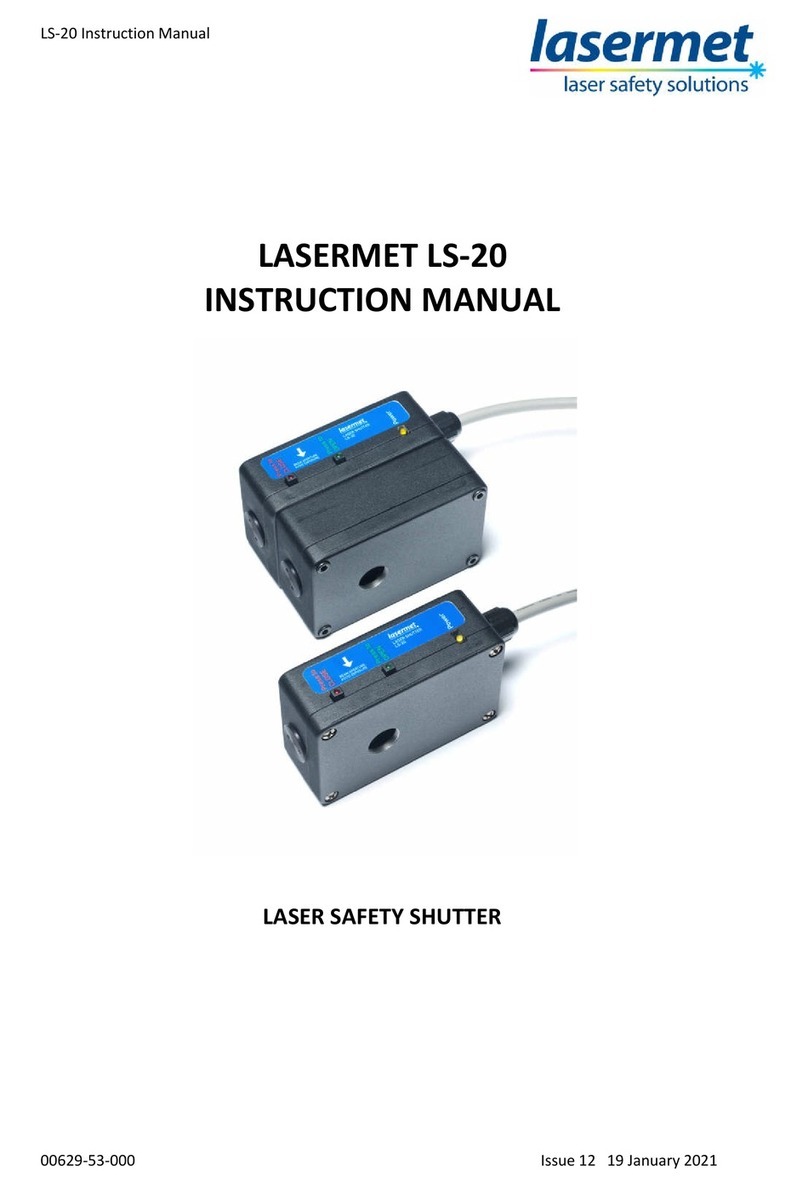
Lasermet
Lasermet LS-20 instruction manual
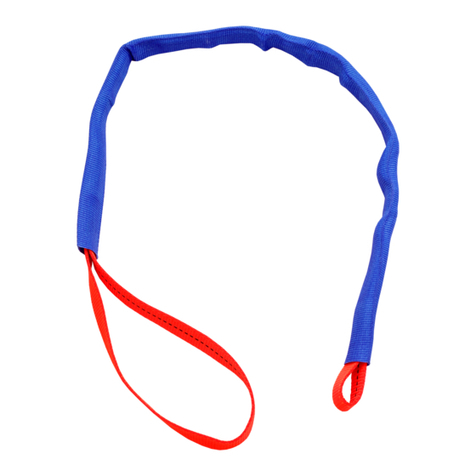
IKAR
IKAR ANCHORAGE SLINGS Instructions for the use and inspection records

Guardian Fall Protection
Guardian Fall Protection 15026 instruction manual

BERNSTEIN
BERNSTEIN SRO Series manual

Milwaukee
Milwaukee M12 305 Series Operator's manual
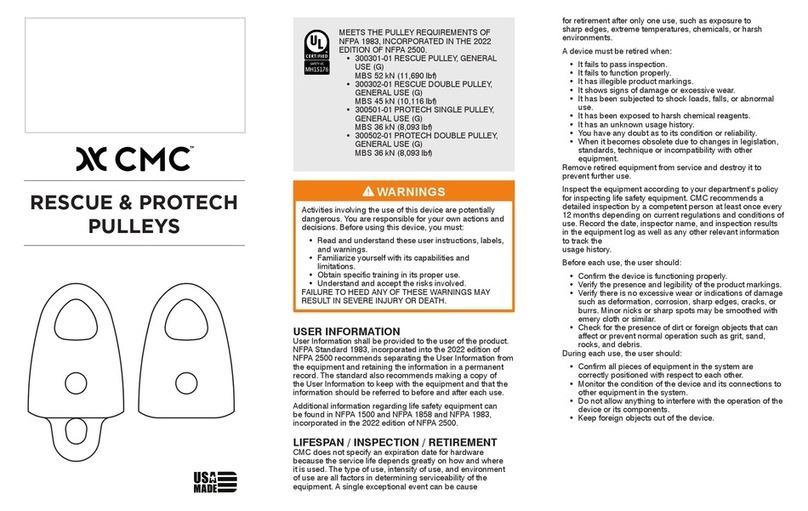
CMC
CMC RESCUE & PROTECH PULLEYS manual
